- Home
- Gerald Durrell
The Stationary Ark Page 15
The Stationary Ark Read online
Page 15
Until one has Government control, the best way of achieving an improvement in zoo standards is for zoo visitors to ask questions when they go to an animal collection and to be gently persistent (following their queries up by letter and telephone if necessary) until they get a satisfactory answer. Here are some very rough guidelines on what to look for and what to ask. (I do hope, incidentally, that you will apply this method to us, should you visit Jersey. I assure you we are far from perfect.) This tiny aide-memoire applies to all zoos and all collections of exotic animals anywhere in the world. It can be roughly divided into two parts: what to look for, and what to ask:
Look for the condition of the animal (ignore the cage to begin with). Look for an air of contentment – glossy and tight feathering in birds; sleek, shiny coats on well-covered bodies in mammals; a healthy patina on reptiles, amphibians and fish. Above all, look for that unflurried, relaxed air of happiness: it is quite unmistakable when you see it.
(Remember that new arrivals, oldest inhabitants, or sick creatures can look like hell.)
Look at the cage. Remember that, in many cases, the size is not all that important (unless minuscule), so don’t be misled by size, or by architectural beauties. Is it suitable for the species of animal? Is there furniture in the cage – branches, logs, swings, barrels, etc.? Can the animals get to a place secluded from the public? Can they get away from each other?
(Remember, when you are being harsh, that a lot of zoos, through lack of money, are using cages dating back to Victorian times. At the same time, be sure to notice that many zoos are creating new cages which are worse than the Victorian ones.)
Look for the water supply. Is it clean and plentiful?
(Please remember that some animals use their dishes, ponds or lakes as lavatories, which makes life difficult. Others wash their food in it, or bathe in it. However, diligent inspection can tell the difference between dirty, fresh water and dirty, five-day-old water.)
Look for cleanliness. I do not mean if a cage has obviously not been cleaned out that day. Does it look as though it was ever cleaned out thoroughly?
(Your living-room at the end of the day shows signs that you have lived in it, but it is basically clean; thus a cage should give the appearance of being cared for, but lived in. It should not look as if it was given a lick and a promise during the American revolution.)
Now we come to what to ask. Those of you who are students of human nature and the depths of prevarication to which homo sapiens can sink, may get a lot of fun out of this.
First, ask what purpose does this collection of animals fulfil.
(It could be scientific, conservation, educational or amusement. It should, of course, be all four, but it is generally only the latter.)
Ask if they study their animals. If so, do they publish their findings? If so, where? Ask if they have a filing system and how complex it is. Ask what they have bred, when they bred it, how many they breed a year and have they bred them to the second, third, or fourth generation. Do they publish this information? Where?
(A very good and wise zoo director once said to me: ‘Any fool, with luck, can breed an animal once. You can only say you are successful when you are breeding them regularly and to the second and third generation.’)
If there are single animals in the collection, ask why they do not have mates. Ask also whether they are prepared to lend their single specimens to other zoos for breeding purposes.
Ask what their death rate is per annum. Do they keep it on file, and do they publish it? Are the animals that die sent for post-mortem?
What is the administrator’s overall attitude to the conservation of animal life and what are they doing to assist it?
What threatened species are they breeding? Have they got them in pairs, or colonies?
(It is scarcely any use talking about your great contribution to conservation if you simply have a pair of animals that breed once a year and of whose progeny you immediately dispose.)
What success are they having in breeding endangered species? How self-supporting are they in terms of breeding their own animals, both rare and common?
(The ultimate aim of any responsible zoo should be to reach a point where they are entirely self-sufficient in their breeding and do not have to act as a further drain upon wild stocks.)
What are their future plans for conservation?
What are their future plans for education?
What are their future plans for the scientific investigation of the species they keep?
What research work is planned?
I am not suggesting that every zoo should be able to give you an adequate reply to each of these questions, nor necessarily measure up to the standards that I have suggested you look for. What I am suggesting is that every zoo should be asked these questions with increasing frequency and belligerence, so that they are eventually forced out of their lethargy into improving their standards and thinking seriously about what their role is supposed to be.
But to return to us. What we have tried to do in Jersey is to create a new sort of zoo. I think we have succeeded. We have made many mistakes and will probably make many more, but we are still in our infancy. Before I started in Jersey, I was told a great many things by a great number of people and all these predictions have proved wrong.
I was told that I would never gain support in such a remote place as Jersey. At the time of writing, we have over 15,000 members spread around the world from Peking to Pretoria, from Sydney to Seattle. We are visited by over 200,000 visitors a year and this figure grows annually.
I was told that the inherent difficulties of keeping and breeding rare and threatened animals were enormous, insurmountable in many cases. Though I am not suggesting that breeding wild animals is a simple operation, it can be done, as is proved by our breeding record which, for our size, is phenomenal and improving yearly.
I was told you could not keep large quantities of the same species of animal on display, or the public would get bored. One of our major exhibits consists of six aviaries containing nothing but White-eared pheasants. There is a large explanatory notice, outlining our success with these birds and the reason for our work with them. We have found that the public are fascinated by the story and applaud our efforts. No one has displayed any signs of ennui.
I was told I would never get people with university degrees to undertake the ‘menial’ tasks of looking after the animals. I said I did not believe it; to be qualified did not mean deified. Fifty per cent of our staff is qualified, happily doing ‘menial’ work, because of the close contact they thus obtain with the animals and the studies this allows them to undertake and to publish in our Annual Report and other scientific publications.
Last, and probably most important, I was told that my ideas of captive breeding to assist in saving species threatened with extinction were, variously, futile, or cruel, or biologically unsound. Today, what I have been advocating from the age of sixteen, is coming into being: captive breeding groups are being set up throughout the world. They are not always in the best of hands, but never mind, it is a start. Even that massive and most conservative of bodies, the International Union for the Conservation of Nature, is admitting, with a certain Teutonic caution, that captive breeding may well help to save certain species.
In our next step, we plan to form the Trust into a kind of mini-university of wildlife husbandry and breeding. I must stress that this would not be a keeper-training programme, such as some zoological gardens are putting into operation. These are excellent and much needed, but this would be something quite different and much more detailed and comprehensive and would not, of course, concern itself simply with zoological gardens and their maintenance.
If I may criticize the conservation scene (with particular reference to controlled breeding programmes) I would point out the strange and quite unnecessary gulf that seems to exis
t between the so-called practical and the scientifically qualified man. This gulf is a wide one and can be damaging. The fault lies on both sides: the practical man tends to shy away from the qualified man, trailing what looks like an entire alphabet after his name; the qualified man, on the other hand, tends to believe the practical man, without qualifications, is a mumbling illiterate.
As usual, the truth lies mid-way between the two extremes. I know practical men that I would not put in charge of a dead chihuahua and qualified men who, coming from the rarified heights of science, cannot recognize an animal as being one unless it is floating, immobile, in a tank of formaldehyde. I know some most knowledgeable practical men who can only communicate their valuable experience in a series of inarticulate grunts and I also know qualified men who can only impart their valuable information in a tangled series of twelve-syllable words. Between the Neanderthal grunt and the polysyllabic fluting we must find common ground. This mutual suspicion between the qualified and the practical man leads to a lack of liaison, which, as I say, can be very damaging to the field of controlled breeding.
Examples of what I mean can be found dotted throughout the various volumes of the Red Data Books, published by the International Union for the Conservation of Nature. These excellent publications, a list of the endangered mammals, birds and reptiles of the world, together with information about their past and present distribution, contain sections which deal with the number of that particular species held in captivity and their possible breeding potential in captivity. In many cases, the section headed breeding potential is left blank, which is a correct and scientific confession of ignorance, but in a number of cases there are written the words, ‘unknown, probably nil’ or ‘unknown, probably poor’. A good example is the sub-species of the Serval, Fells serval constantina. Under the breeding potential in captivity the entry reads, ‘the Serval appears not to produce very well in captivity and I have found two records’. The fact is that quite a number of zoological collections have bred Servals and we, to date, have recorded 35 births – one specimen has had thirteen sets of cubs, twenty-nine cubs in all.
This misinformation is due to the qualified not seeking the advice of the practical. Diligent research will uncover many examples of the reverse situation as well. This is only one aspect of it. Another and equally alarming one is that, as controlled breeding programmes become more fashionable among conservationists, more and more heavily qualified people are going to be put in charge of them, and these are generally the people with no practical experience.
Everyone seems hypnotized by university degrees. They are, of course, useful, but if the person concerned is to involve himself or herself with a captive breeding programme, they must have the added qualifications of being able to shovel manure, carry a bucket of water or a bale of hay, get dirty and tired and get to know the living animal, as opposed to the textbook one: they can be very different. As I say, fifty per cent of our staff is qualified, but they do this hard work of looking after the animals, as well as studying them.
In the future the idea is that this Trust should enlarge the range of its breeding specimens (remembering always our limitations of size), for there are many groups which we do not have represented in the collection yet which fall within the scope of our work. For example, we have none of the Edentata (anteaters, armadillos, etc.), nor do we have any of the Canidae (dogs, foxes and so on). Thus we hope to add to the collection viable breeding groups of some of the endangered members of such groups. Once this is done, the collection will be extremely comprehensive and serve a dual purpose; the breeding groups would be of endangered species that urgently need controlled breeding programmes to help them, and they would also be acting as a teaching tool. Already, with grants from our United States sister organization, we have set up a nutritional research laboratory which, we hope, will give us invaluable information in the future and, with another most generous grant, we are in the process of building a veterinary hospital and research unit with X-ray and post-mortem facilities and a well-equipped recovery-room for those creatures undergoing extensive treatment.
For this teaching scheme we will need further laboratories in which both students and visiting scientists may study and accommodation in which they can live, a lecture hall, and a small still and cinematographic studio and recording laboratory. When this is all completed – and it is only lack of funds that prevents us doing it immediately – the Trust’s headquarters will be, in effect, a complex conservation laboratory in which not only will breeding colonies of threatened species be established, but every aspect of these creatures, biologically, will be studied and finally, most important of all, qualified personnel can be trained to undertake captive breeding programmes anywhere in the world that they are needed.
Selected students could come to the Trust headquarters to undergo an intensive controlled breeding training course. First, by working in every section in the collection, they would get an excellent overall training in the varied techniques of breeding with a wide range of species – mammals, birds and reptiles. They could then go on to specialize in the creatures emanating from their particular part of the world. At intervals, they would have both oral and written examinations, the students could return home and, with the constant help and advice of this Trust and its staff, be in a position to assist their governments, or the conservation organizations, to form breeding centres in places where such projects should be established.
This would not be simple zoo-keeping but teaching the techniques of animal husbandry of the type in which we specialize: the techniques of building up viable self-sustaining breeding groups of a species with a view, ultimately, to returning specimens from these groups to the wild so as to re-populate areas or revitalize anaemic wild populations. Such work requires the student to be hardworking, meticulous and, above all, dedicated. It is to be hoped that these students would be funded by grants from their governments or by conservation organizations. Thus the Trust would become something that is most urgently needed, a form of university for the teaching of controlled breeding techniques, where people can get the correct training in animal husbandry and then take their talents back to form conservation units throughout the world.
This is what we plan to do. I and the people who work with me think the task is urgent, important and, above all, constructive. We hope, now that you have finished this book, that you will think the same. If so, will you help us by becoming a member of the Trust? Our annual fees are small and we try to keep them that way, acting on the principle that 15,000 members paying modest fees put an organization into a stronger position than 5,000 paying a lot. Unlike most charities, you can come and see what your money is being spent on and it gives us and the animals great pleasure to meet you. So, on behalf of the multitude of charming and bizarre, colourful and exotic, fascinating, resourceful, magnificent, dignified, funny and beguiling minority in this world (who cannot read, write, vote or invent nerve gas), I invite you to join us. Please write to me for details at:
The Wildlife Preservation Trust International,
Les Augrès Manor,
Trinity, Jersey,
Channel Islands.
A MESSAGE FROM
THE DURRELL WILDLIFE CONSERVATION TRUST
The end of this book isn’t the end of Gerald Durrell’s story. The various experiences you have just read about gave impetus and inspiration to his lifetime crusade to preserve the rich diversity of animal life on this planet.
Although he died in 1995, the words of Gerald Durrell in this and his other books will continue to inspire people everywhere with love and respect for what he called ‘this magical world’. His work goes on through the untiring efforts of the Durrell Wildlife Conservation Trust.
Over the years many readers of Gerald Durrell’s books have been so motivated by his experiences and vision that they have wanted to continue the story for themselves by supporting the work of his Trust. We hope tha
t you will feel the same way today because through his books and life, Gerald Durrell set us all a challenge. ‘Animals are the great voteless and voiceless majority,’ he wrote, ‘who can only survive with our help.’
Please don’t let your interest in conservation end when you turn this page. Write to us now and we’ll tell you how you can be part of our crusade to save animals from extinction. For further information, or to send a donation, write to:
Durrell Wildlife Conservation Trust
Les Augrès Manor
La Profonde Rue
Trinity
Jersey, Channel Islands
E3 5BP
Or visit the website:
www.durrell.org
First published in 1976 by Collins
This edition published 2011 by Bello
an imprint of Pan Macmillan, a division of Macmillan Publishers Limited
Pan Macmillan, 20 New Wharf Road, London N1 9RR
Basingstoke and Oxford
Associated companies throughout the world
www.panmacmillan.com/imprints/bello
www.curtisbrown.co.uk
ISBN 978-1-4472-1422-9 EPUB
ISBN 978-1-4472-1421-2 POD
Copyright © Gerald Durrell, 1974
The right of Gerald Durrell to be identified as the author of this work has been asserted in accordance with the Copyright, Designs and Patents Act 1988.
Every effort has been made to contact the copyright holders of the material reproduced in this book. If any have been inadvertently overlooked, the publisher will be pleased to make restitution at the earliest opportunity.

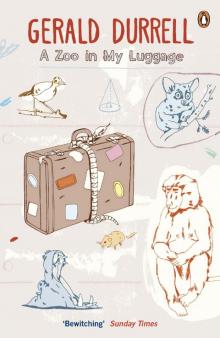 A Zoo in My Luggage
A Zoo in My Luggage The New Noah
The New Noah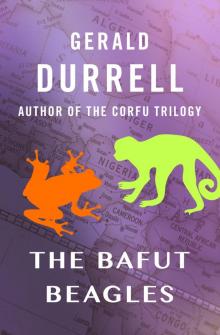 The Bafut Beagles
The Bafut Beagles Encounters With Animals
Encounters With Animals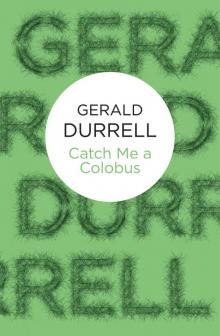 Catch Me a Colobus
Catch Me a Colobus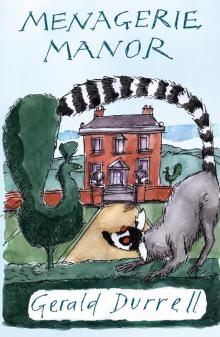 Menagerie Manor
Menagerie Manor The Picnic and Suchlike Pandemonium
The Picnic and Suchlike Pandemonium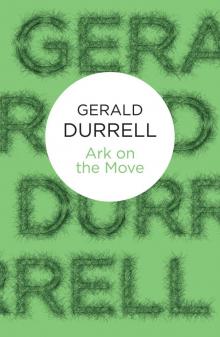 Ark on the Move
Ark on the Move My Family and Other Animals
My Family and Other Animals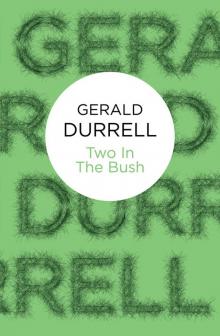 Two in the Bush (Bello)
Two in the Bush (Bello)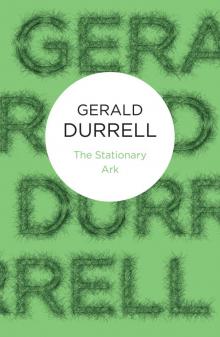 The Stationary Ark
The Stationary Ark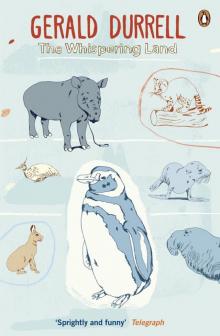 The Whispering Land
The Whispering Land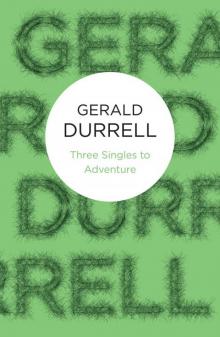 Three Singles to Adventure
Three Singles to Adventure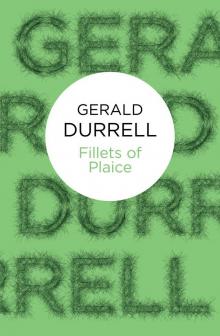 Fillets of Plaice
Fillets of Plaice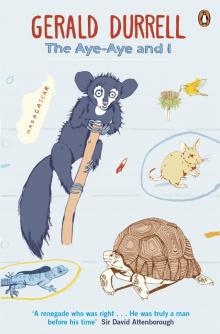 The Aye-Aye and I
The Aye-Aye and I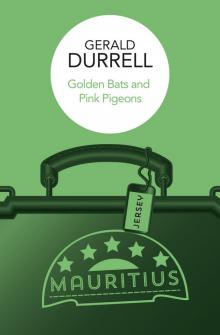 Golden Bats & Pink Pigeons
Golden Bats & Pink Pigeons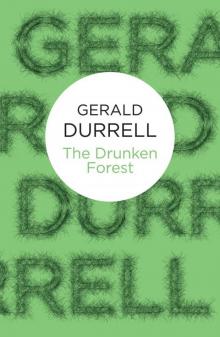 The Drunken Forest
The Drunken Forest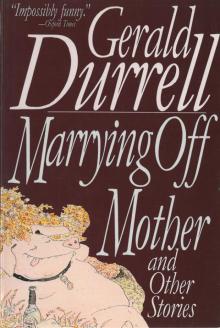 Marrying Off Mother: And Other Stories
Marrying Off Mother: And Other Stories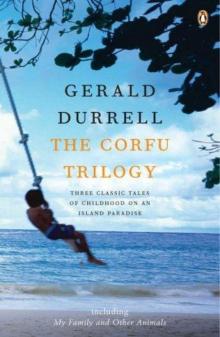 The Corfu Trilogy (the corfu trilogy)
The Corfu Trilogy (the corfu trilogy)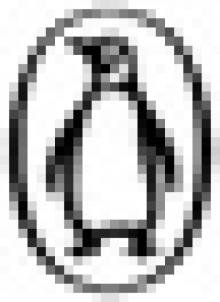 The Corfu Trilogy
The Corfu Trilogy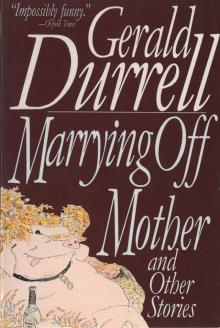 Marrying Off Mother
Marrying Off Mother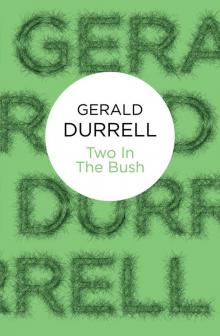 Two in the Bush
Two in the Bush